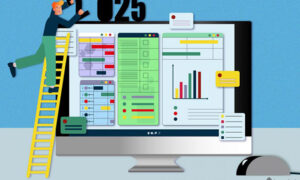Contemporary construction projects are evolving in their complexity and broadness; hence, finding a practical, reliable project management solution is crucial. In today’s world, the integration of technology into our daily tasks is not just essential—it’s inevitable. The right project management software can help you effectively streamline your tasks, manage your team and project, and ultimately lead to increased productivity and improved final results.
Given the vast selection of software available, how does one ensure they chose the right one? Here are a few key factors that every construction company should consider when deciding.
- Evaluate Your Specific Needs: To choose the right software, consider your project’s requirements first. For example, you should determine whether or not you require features for budgeting, scheduling, task assignment, or communication. Get input from different team members to understand the unique needs of your project thoroughly.
- User-friendly Interface: A software interface that is easy to navigate allows team members to utilize the system to its fullest capabilities. An overly complicated system may lead to errors, user frustration or even non-use. Opt for software that offers clarity and simplicity alongside powerful features.
- Integration Capabilities: The software should be able to integrate effortlessly with other tools your team is accustomed to, for example, accounting software, email clients, or drafting tools. Seamless integration ties all aspects of your project together, making it easier for information to flow.
- Mobility: Given the nature of the construction industry, mobility replaces the traditional office-based work environment. The software you choose should offer mobile access, enabling your team to access data, update progress, and communicate effectively in real-time, even from remote locations.
- Security: As with any digital tool, security should be a high priority. Ensure the software uses the latest security protocols to protect your project’s critical information. This might include encryption, secure backups, and robust user permissions.
- Customer Support: Responsive, reliable customer support can be a game-changer in the fast-paced world of construction. As projects can’t afford lengthy downtime due to technical problems or misunderstanding, it’s crucial that your software provider offers prompt and efficient customer support.
- Cost-Effectiveness: Evaluate whether the software brings value for your project and your business in general. A software solution might have all the desirable features but if it’s not justifiable to the scale and budget of your project, it might do more harm than good.
- Scalability: Choose a software package that grows as your enterprise grows. As your construction firm evolves, your software should be able to match the pace and not become a bottleneck. Scalability ensures you don’t outgrow the software too quickly, saving you time and investment in the long run.
- Training and Documentation: A top-notch software system should also come with comprehensive training resources and documentation. This aids in quicker learning and onboarding processes.
- Track Record: Consider working with a software provider that has a proven track record in the construction industry. Look for customer testimonials, reviews, and case studies – they can speak volumes about the software’s reliability and effectiveness.
In conclusion, selecting the right project management software for your construction project is an essential step, one that should never be overlooked or undervalued. Clearly understanding your requirements, assessing different options, and taking into consideration the suggestions mentioned above can significantly aid you in this important task. Remember, it’s not just about managing tasks; it’s about driving efficiency, increasing collaborative efforts, improving site safety, ensuring everyone is on the same page, and ultimately, delivering a successful project.


































